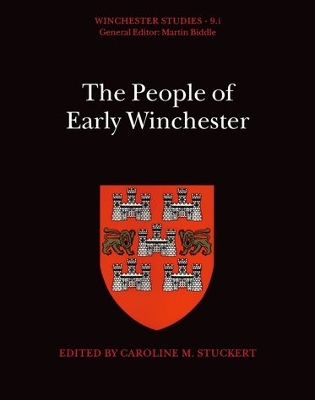Winchester Studies
1 total work
9.i
The People of Early Winchester
Published 15 December 2016
This volume traces the lives, health, and diseases of Winchester's inhabitants as seen in their skeletal remains from the mid-third century to the mid-sixteenth century, a period of over 1,300 years. Although the populations of other British urban areas, York and London in particular, have been studied over an extended period, this volume is unique in providing a continuous chronological window, rather than a series of isolated studies. It is particularly notable
for the large sample of Anglo-Saxon burials dated to the 8th - 10th centuries, which provide a bridge between the earlier Romano-British material and the later medieval samples.
This study includes information on demography, physical characteristics, dental health, disease, and trauma collected from over 2,000 skeletons excavated from the Roman Cemetery at Lankhills and the Anglo-Saxon and medieval cemeteries of the Old and New Minster and Winchester Cathedral, as well as other Early Anglo-Saxon sites in neighbouring areas of Hampshire. The study establishes the underlying continuity of the population in spite of massive culture change between the Roman and Early Saxon
periods, and delineates the increasing tendency to rounder skulls seen in the medieval period, a trend which is found in continental Europe at the same time. There were also significant differences through time in disease patterns and trauma. Leprosy, for example, is found only in post-Roman
skeletons, while decapitations are seen only in Roman skeletons. Weapons injuries are confined to Anglo-Saxon and medieval individuals, although broken bones were common during the Roman period.
for the large sample of Anglo-Saxon burials dated to the 8th - 10th centuries, which provide a bridge between the earlier Romano-British material and the later medieval samples.
This study includes information on demography, physical characteristics, dental health, disease, and trauma collected from over 2,000 skeletons excavated from the Roman Cemetery at Lankhills and the Anglo-Saxon and medieval cemeteries of the Old and New Minster and Winchester Cathedral, as well as other Early Anglo-Saxon sites in neighbouring areas of Hampshire. The study establishes the underlying continuity of the population in spite of massive culture change between the Roman and Early Saxon
periods, and delineates the increasing tendency to rounder skulls seen in the medieval period, a trend which is found in continental Europe at the same time. There were also significant differences through time in disease patterns and trauma. Leprosy, for example, is found only in post-Roman
skeletons, while decapitations are seen only in Roman skeletons. Weapons injuries are confined to Anglo-Saxon and medieval individuals, although broken bones were common during the Roman period.
